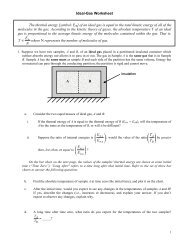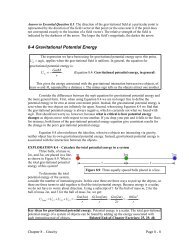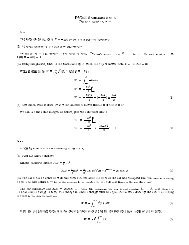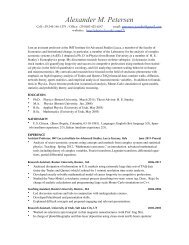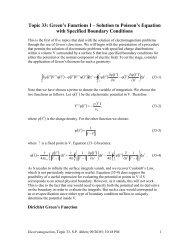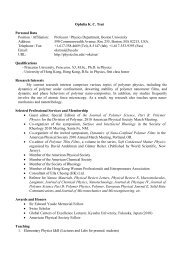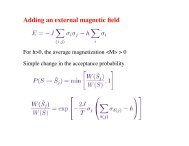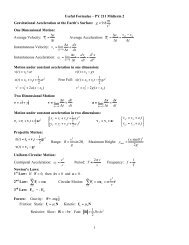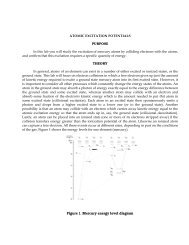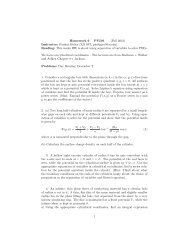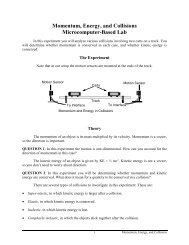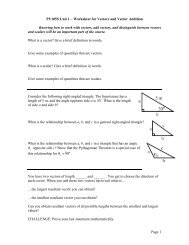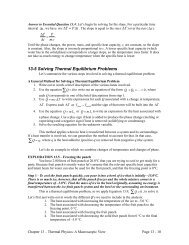Crystal Structure 1 3.1 Some Basic Concepts of Crystal Structure ...
Crystal Structure 1 3.1 Some Basic Concepts of Crystal Structure ...
Crystal Structure 1 3.1 Some Basic Concepts of Crystal Structure ...
Create successful ePaper yourself
Turn your PDF publications into a flip-book with our unique Google optimized e-Paper software.
<strong>Crystal</strong> <strong>Structure</strong><br />
Next we discuss the physical meaning <strong>of</strong> reciprocal lattice vectors as defined in eqn. 3.6.<br />
Consider the primitive vectors, a, b and c <strong>of</strong> a lattice as depicted below.<br />
We first focus on the plane (100) as marked in the figure. One may observe that the area<br />
<strong>of</strong> this plane is |a b| and the cross product a b is normal to the plane and directed<br />
away from the origin. In addition, the volume <strong>of</strong> the parallelepiped generated by a, b and<br />
c, which we label by V abc is a (b c) (= b (c a) = c (a b)). It follows that the<br />
distance between this plane the one next and parallel to it is:<br />
<br />
Vabc<br />
a b c<br />
d100 .<br />
b c b c<br />
(3.7)<br />
Therefore, the reciprocal lattice vector, A, as defined in eqn. 3.6 can be rewritten as:<br />
<br />
<br />
<br />
b c 1<br />
A 2<br />
2<br />
nˆ<br />
100<br />
d<br />
(3.8)<br />
a b c<br />
100<br />
where n 100 is the unit vector normal to (100) (and directed away from the origin.) By<br />
repeating the argument for the other two planes, i.e., (010) and (001), we have:<br />
<br />
B <br />
<br />
C <br />
1<br />
2<br />
nˆ<br />
d<br />
010<br />
1<br />
2<br />
nˆ<br />
d<br />
001<br />
010<br />
001<br />
(3.9)<br />
where n 010 and n 001 is the unit normal to (010) and (001), respectively.<br />
11



![arXiv:1303.7274v2 [physics.soc-ph] 27 Aug 2013 - Boston University ...](https://img.yumpu.com/51679664/1/190x245/arxiv13037274v2-physicssoc-ph-27-aug-2013-boston-university-.jpg?quality=85)
